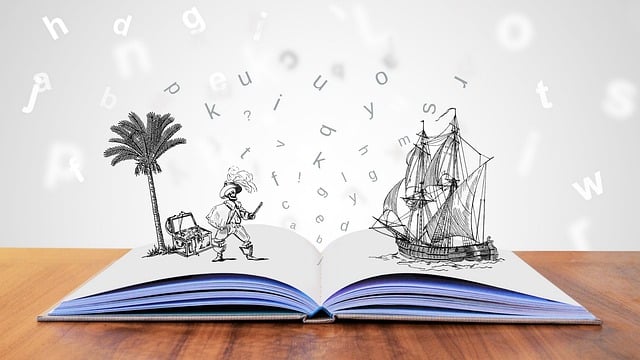The purpose of a synopsis is to provide a crisp overview of the novel, the characters, and the themes and alluring the reader to read the whole novel. Though it is a daunting staff to pen down a synopsis, it cannot be avoided also as it is an important station in the journey of publication. One can increase the chances of the synopsis been noticed and novel getting published by putting in the effort and time keeping in mind the steps that are required to build a successful synopsis.
The opening sentence is important as that has to draw the attention of the reader and build an urge in them to continue the reading. Starting with a hook to pull the customer helps in making them curious about your story. Summarizing the main plot points of the story in a few sentences helps in this regard where the sentences should consist of beginning, middle, and end of the story along with the major turning points or plot twists.
Mention a brief description of the main characters and do not forget to include their names, ages, and personalities. Ensure their motivations and goals are also mentioned along with the conflicts or challenges they face. The main themes of your novel like love, betrayal, loss, or redemption are to be highlighted in the synopsis explaining how these themes are woven into the story and how they are resolved. It is very important to keep the synopsis brief and to the point, typically between 1-3 pages in length- hence stick to the most important details avoiding the minor details or subplots. Once the synopsis is written, it is to be read minutely and incorporate all necessary revisions. Spelling errors and grammar to be checked ensuring the synopsis is articulate in reflecting the tone and style of your novel. Solicit the help from a trusted friend, writing group, or professional editor for reviewing the synopsis and getting genuine feedback. Based on this feedback, final revisions are to be made before submitting the synopsis to publishers.
How to write a novel summary
A good novel summary captures the essence of the story and conveys it in a concise and engaging manner- and is brief and engaging capturing the key elements and themes leaving the reader enticed to learn more. To write a good novel summary, one needs to read it carefully, taking note of key characters, plot points, and themes before summarizing the novel. The main characters, the setting, and the central conflict is to be investigated considering what the author has tried to convey with the story. The summary should start with a brief rundown of the main events of the story in a few sentences, highlighting the most important moments. Description of main characters and the setting of the story is important when building the summary as that must provide enough detail to readers and a feeling of the world in which the story takes place. The summary must capture the theme and message and the plot and characters are to be woven neatly. Read the summary again and again and keep revising whenever necessary until it is concise, clear, and engaging.
Synopsis of Famous Novels
“To Kill a Mockingbird” by Harper Lee is a novel set in the 1930s in the deep South follows the story of a young girl named Scout who when growing up, learns about racism and injustice in her community. When her father, a lawyer, takes on the case of a black man accused of a crime he didn’t commit, Scout begins to see the world in a new way.
“The Great Gatsby” by F. Scott Fitzgerald is a novel telling the story of a mysterious millionaire Jay Gatsby who threw extravagant parties in the hopes of winning back his lost love, Daisy. Set in the 1920s, the novel explores themes of love, wealth, and the corrupting influence of the American Dream.
“1984” by George Orwell is a dystopian novel set in a future society where the government has complete control over every aspect of people’s lives. The story follows Winston Smith, a man who begins to rebel against the oppressive regime, but soon finds himself caught up in a dangerous game of deception and betrayal.
“The Catcher in the Rye” by J.D. Salinger is a classic novel following the story of a teenage boy Holden Caulfield who WAS expelled from his prep school and struggled to find his place in the world. Through his adventures and encounters with various characters, Holden begins to question the hypocrisy and phoniness of the adult world.
“Pride and Prejudice” by Jane Austen is a novel set in early 19th-century England that tells the story of the Bennet family and their five daughters, particularly Elizabeth and her relationship with the wealthy Mr. Darcy. Along the way, the novel explores themes of social class, marriage, and the roles of women in society
Creating a summary for a novel
To build up the summary of a novel, ideally one should first read the novel thoroughly with full attention to the plot, setting, themes, characters etc. and keep taking relevant notes while reading. While reading, identify the main conflict that the protagonist faces in the novel. Write a brief overview of the setting which shall mention the historical and cultural contexts as well. The main characters are to be introduced along with their relationships highlighting the character traits that are important. Thereafter summarize the plot in few sentences ensuring the inclusion of major events that role the story and response of protagonist to the events. Mention the main theme of the novel with a focus on the message of the author in the novel. Thereafter conclude the novel with personal observation and recommendation. The thumb rule of writing summary is it must be concise and without any spoiler.
Synopsis tips for writers
Keep the synopsis brief – it must be a summary of the story. Ideally it should be between one to three pages depending on the complexity and length of the story. Sticking to the main plot is mandatory with minimum deviation from the main plot. To ensure that, it is advisable to avoid subplots and too many details as well. However, in the process, the main characters and their motivations should not be missed. Synopsis should always be written in an active voice and unnecessary phrases and words are to be avoided. A synopsis should always be written in the third person, even if the story is told from the first-person point of view. Once the synopsis is written, make sure to read it over carefully multiple times incorporating necessary edits or revisions as it is a well-written synopsis that makes all the difference in getting your story noticed by publishers.
Summarizing a novel
Summarizing a novel is the process of condensing the events and main plot points of the story into a crisp and informative summary. One can build up a concise and informative summary of a novel that captures its main themes and events following these steps. The process followed for this begins with reading the novel carefully taking necessary notes on main characters, setting, and major events while reading only. While reading, the main plot points are to be identified as they are the key events that move the story forward and create tension and conflict. For this, identification of the main characters in the novel is important which shall include their names, roles, and relationships to each other. While writing the summary, one should keep in mind the protagonist and the key supporting characters, as well as any antagonists or villains. Central conflict or problem that the protagonist must overcome is to be identified and this may involve an internal struggle or an external obstacle, such as a villain or natural disaster. Write a summary of the novel that includes the main plot points, characters, and conflict with the help of the notes. While doing so, ensure focusing on the most important details and avoid getting bogged down in minor subplots or details. Once the summary is written, revise and edit it multiple times to ensure that it is clear, concise, and accurate and no essential details are left out- the summary should accurately reflect the overall tone and style of the novel.




